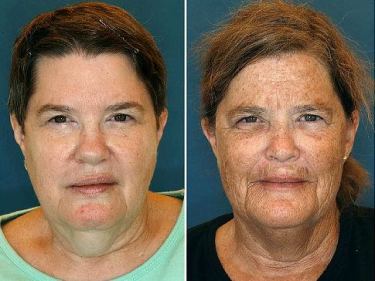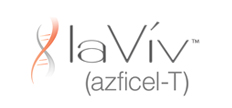 Watch here for everything you wanted to know about surgical and non-surgical cosmetic medicine including eyelid surgery, botox, varicose & spider vein treatment!
Watch here for everything you wanted to know about surgical and non-surgical cosmetic medicine including eyelid surgery, botox, varicose & spider vein treatment!
Entries in wrinkles (6)
Simple steps to treat wrinkles around the mouth and lips

Everyone hates those wrinkles that radiate around the lips. And they only seem to get worse with age. What can be done? These simple steps will help to prevent these lines and can reduce their visibility.
1. Stay out of the sun. It's well-know that sun damage causes wrinkles. Wear at least a 30 SPF sunblock and a hat when you're spending any time outside.
2. Don't smoke. There are many good reasons to avoid smoke or to stop smoking. Lip wrinkle prevention is another compelling argument to not smoke.
3. Use a medical-grade skin care regimen. Ask your dermatologist or cosmetic surgeon about topical skin care products that can help with your particular skin type. Tretinoin and L-ascorbic acid can both help with wrinkles by boosting collagen conent in your skin.
4. Laser wrinkle treatments and chemical peels. These will create controlled injuries in the skin that stimulate new skin growth that tends to look smoother and more youthful. Lasers like Fraxel, ActiveFX, and DeepFX have been well established as excellent wrinkle treatments. Traditional dermabrasion (not microdermabrasion) can also work well for lines around the lips, but it has a higher risk of hypopigmentation, when the skin loses it's color and looks porcelain white.
5. Botox. A small amount of this popular muscle-relaxing protein can be injected into the muscles around the lips. Just enough Botox or Dysport will reduce the lines that are caused by pursing your lips without changing the function of the lip muscles.
6. Dermal fillers. The most popular injectable wrinkle fillers are made from hyaluronic acid gel, a substance naturally found in your body. This gel can be used to fill under the wrinkles to lift them up and make them less noticable. Juvederm, Restylane, and Perlane are among the most used HA fillers in the U.S.
7. Combination treatments. Any or all of the above will help to reduce those pesky lip lines. You can talk to one of the doctors at Allure Medical Spa in Michigan for a free consultation if you want to see what can be done for the lines around your lips.
Does sun exposure really cause wrinkles?
We all know that sun isn't good for your skin, but how bad is it? This photo of a set of twins gives a dramatic impression of how severe the sun can be. One twin was a sun worshipper while the other stayed out of the sun and was diligent with her sunscreen. Can you tell which is the sun worshipper?

It is never too late to begin a skin care regimen that starts with sunblock, every day. A broad-spectrum product (both UV-A and UV-B) with an SPF of 30 or greater is ideal. Physical blocks that use zinc oxide or titanium oxide are excellent. Products with oxybenzone should be avoided as it has been linked to free radical damage which may promote skin cancer.
At Allure Medical Spa we can suggest some excellent medical-grade skin care products. You'll need them to protect yourself from the Michigan sun! A sunblock with a tinted cream will help you avoid the pasty look.
If you are looking to reverse the sun damage and brown spots from the summer months, consider a laser resurfacing procedure such as Fraxel or ActiveFX.
(thanks to Dr. Martin Braun of Vancouver Laser for the link to this amazing photo)
Natural filler uses your own skin cells
 LaViv is a new facial filler that uses a small amount of your own skin cells to grow a natural filler material in a laboratory. The substance grown from your own cells is then injected to reduce wrinkles in the skin. It has been reported to last approximately 6 months. The main feature of LaViv is the manner in which it is created from your own body, reducing any chance of an adverse reaction.
LaViv is a new facial filler that uses a small amount of your own skin cells to grow a natural filler material in a laboratory. The substance grown from your own cells is then injected to reduce wrinkles in the skin. It has been reported to last approximately 6 months. The main feature of LaViv is the manner in which it is created from your own body, reducing any chance of an adverse reaction.
RealSelf describes the filler on their site, with a reference to one of Dr. Kotlus' patients who underwent Perlane treatment for nasolabial and marionette lines: http://www.realself.com/blog/laviv-own-skin-repair-wrinkles
BOTOX for headaches and wrinkles

In October 2010, the FDA cleared the wrinkle filler Botox® to treat headaches.
Botox® has long been the most popular world-wide anti-wrinkle treatment with millions of people experiencing it's rather amazing effects.
Botox® for Headaches:
For years we have observed that people with chronic headaches can get substantial relief when we perform cosmetic Botox® . A large study was done comparing Botox® to placebo (salt water) injected into various muscles of the scalp, and the Botox® relieved headaches better than placebo.
What was interesting was where they chose to inject the Botox® for the headaches, and the amount of response that was noticed. In my practice, I treat people every day with Botox® Many of these patients have a history of headaches, even though that is not what they are there for. When asked about headaches on subsequent visits, they often note that they had a substantial reduction in headaches. In fact, many times I hear from my patients "I know my Botox® is wearing off, because I am getting the headaches again". This was why they decided to do a study: To prove what we have observed, that is, Botox® injected for wrinkles relieves headaches. And this is after injecting Botox® in a standard pattern for wrinkles. In the FDA study, they injected in a totally different fashion, and had only a marginal improvement over placebo.
What can this mean? When a study is done for the FDA, they are looking to prove it works and it is effective. They did that. From here we will probably see several studies to see if injectors like myself and others have observed "a better way". Now that it is approved (Botox® for headaches), there will be substantial interest, progress, and adaptation of the use of this amazing medication for a sometimes debilitating painful condition.
Botox® for Wrinkles:
Botox® works by weakening the connection of nerves and muscles. Wrinkles that are caused by repeated overuse, or even normal use of muscles include the "crow's feet" wrinkles on the sides of the eyes, the deep frown between the eyes, and the forehead horizontal lines. There is virtually no treatments that come anywhere close to the effects of Botox® for these lines, not even plastic surgery.
Botox® is typically injected right into the muscles that cause the wrinkles, and is very dose dependant, so the doctor doing the injection needs to understand the anatomy of the muscles as well as be able to estimate the ideal dose for any individual. I evaluate the size of the muscle by having the patient look into a mirror and frown, squint, and raise the forehead.
If you look in a mirror and do a strong frown, you will see that your brow lowers and you develop a crease between your eyes. But you can also see the outline of the muscles that are like bat wings. These bat wing muscles cause the vertical lines. In the very middle of your eyes is a muscle that runs up and down, and this can cause horizontal lines, and is also responsible for the brow dropping over time.
When we use Botox® for these wrinkles, not only do we see improvement or vanishing of the wrinkles, but the brow elevates and creates a more refreshed, happy, and youthful look. I think of it like this: "They come in for the wrinkles, and stay for the brow", because individuals are pleasantly surprised to see the refreshed look of the tired eyes that seemingly had nothing to do with their wrinkles.
Dr Charles Mok
Dr. Kotlus gives eyelid lecture at Asian plastic surgery meeting
Earlier this month, Dr. Kotlus spoke in Seoul, Korea to a group of plastic surgeons about minimally invasive techniques for eyelid and facial rejuvenation. Dr. Kotlus uses an approach that tailors the treatment to a patient's specific needs. For example, certain people would benefit from BOTOX alone, while others may require volume corrections with fillers or fat transfer. Other cases may require surgical procedures such as fat repositioning or an eyelid lift. He explains that a combination treatment often works best. Dual-depth fractional laser resurfacing is the latest wrinkle-eraser on the scene that can also be combined with fillers, BOTOX or Dysport, and surgery. In Asia, there is enormous interest in less-invasive cosmetic procedures.
Dr. Kotlus also lectured at the American Academy of Facial Plastic and Reconstructive Surgery fall meeting in Boston last week, describing how intense pulsed light and photodynamic therapy can benefit people experiencing facial redness, brown spots, sun damage, large pores, and pre-cancerous spots. Along with Florida cosmetic surgeon John Martin M.D., Dr. Kotlus shared his experience with photofacial treatments, particularly in those who have already undergone facial plastic surgery.



